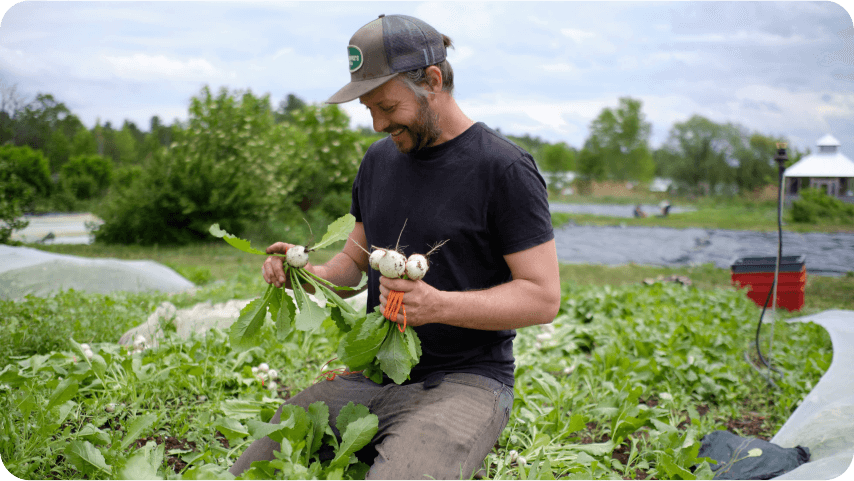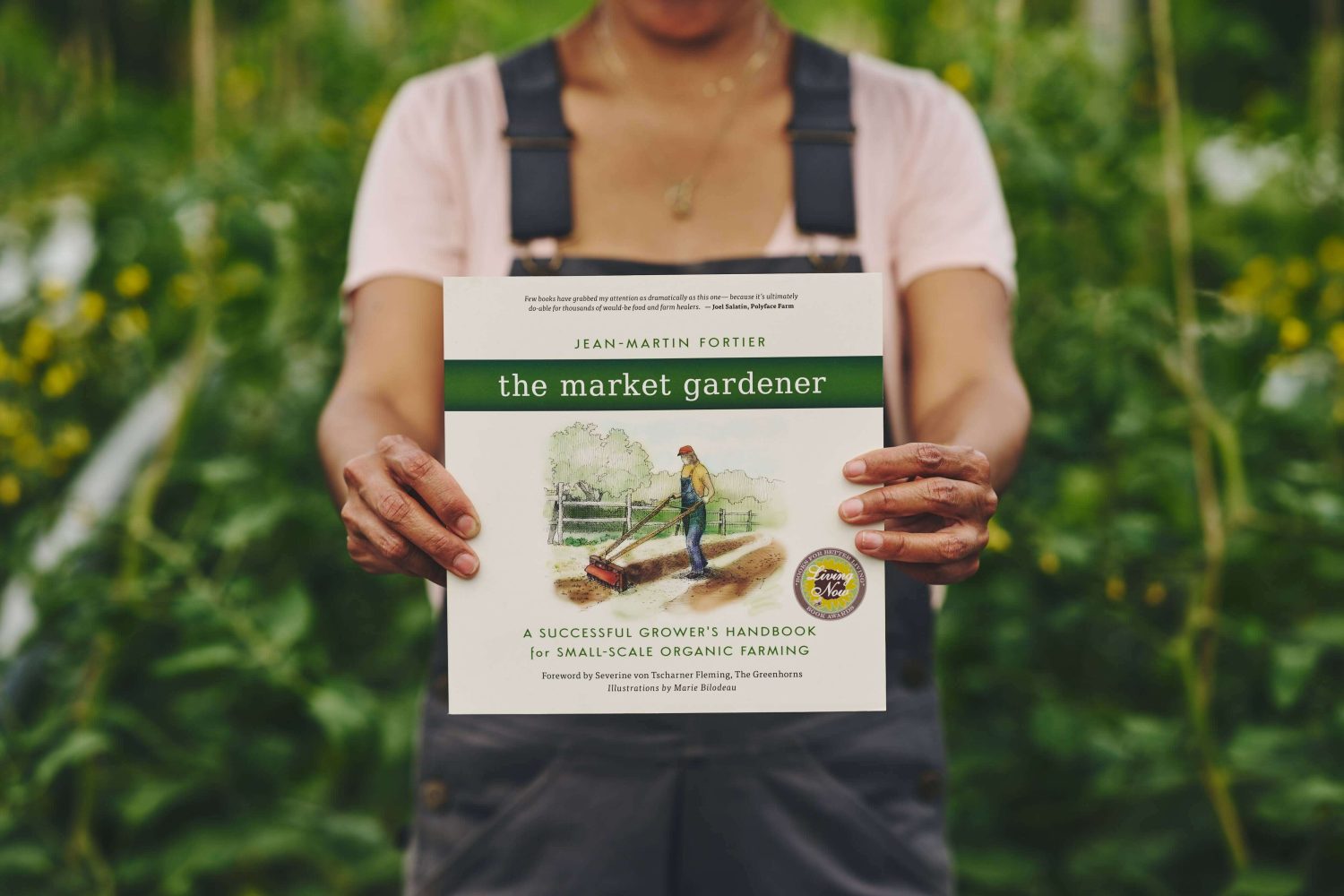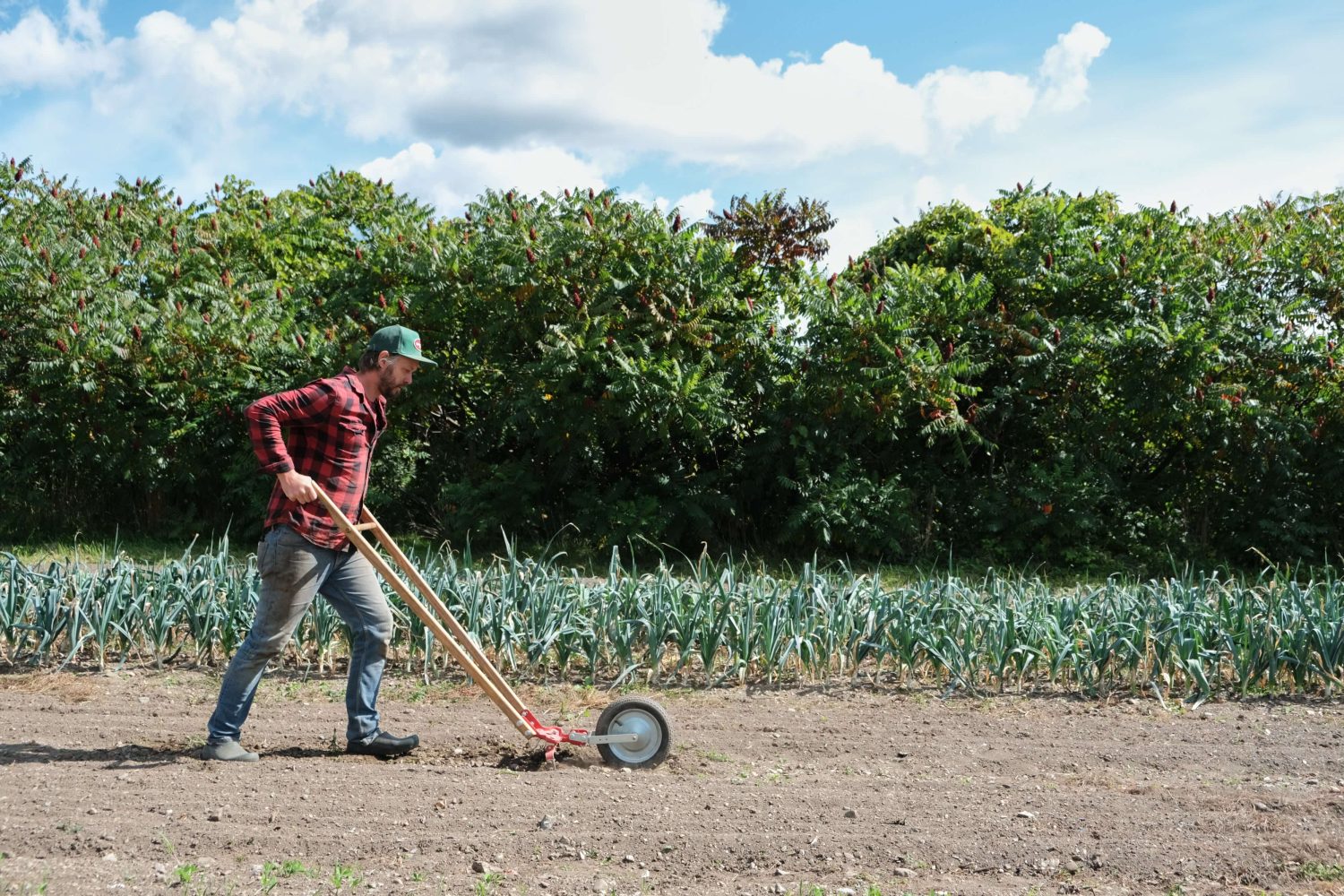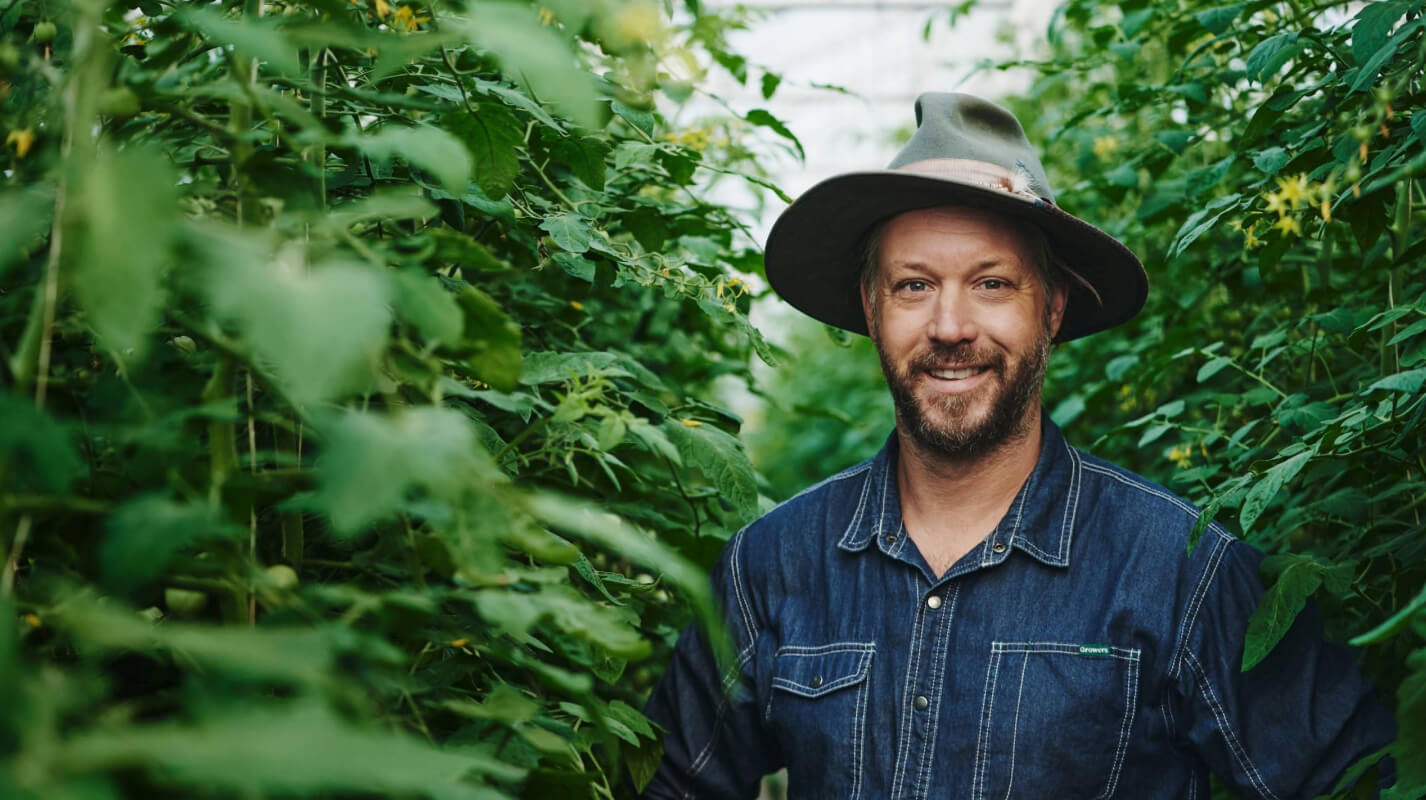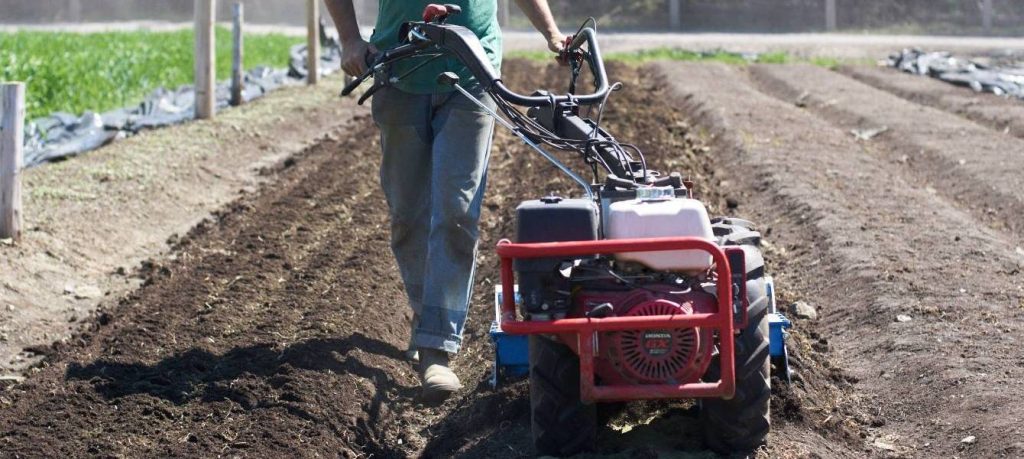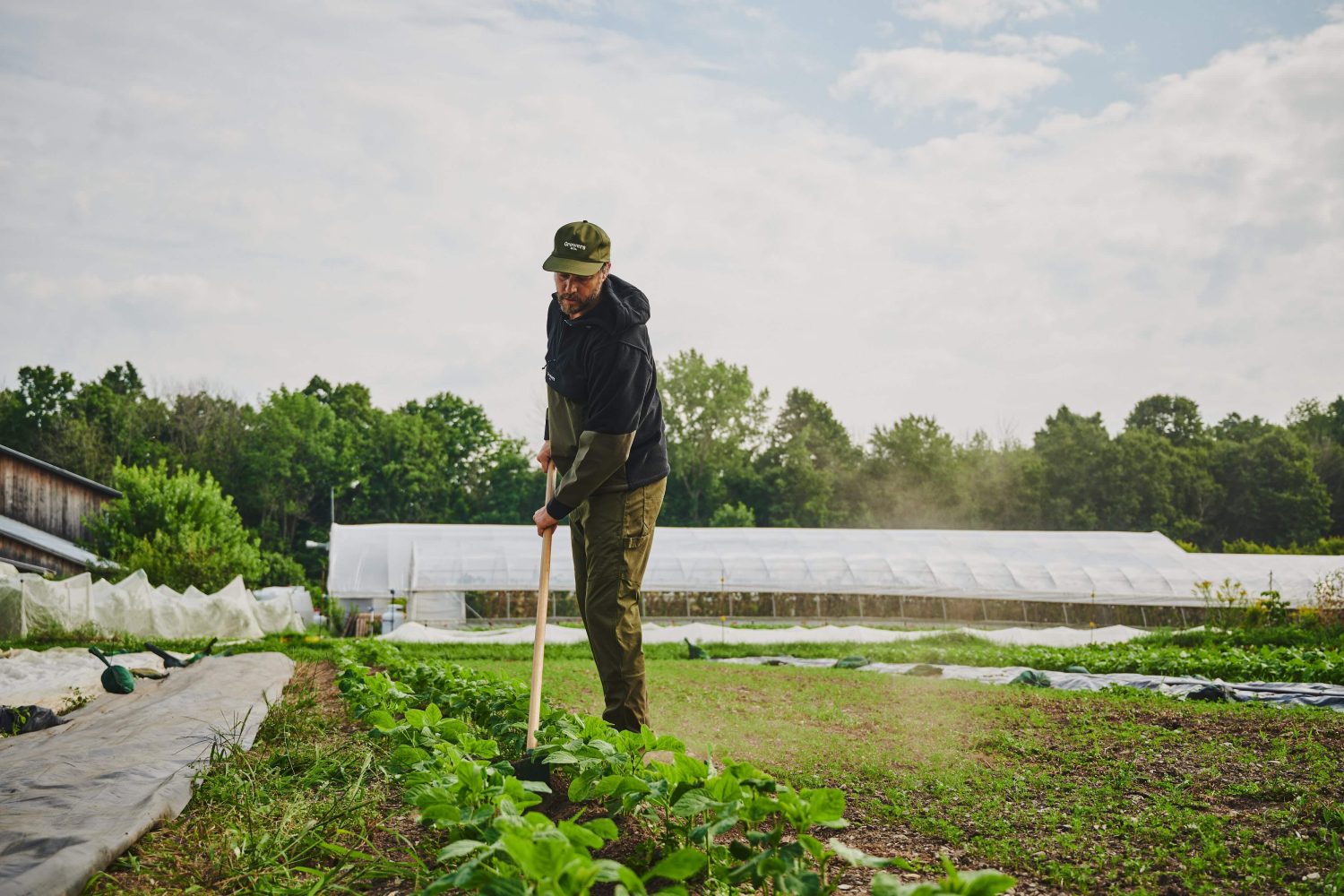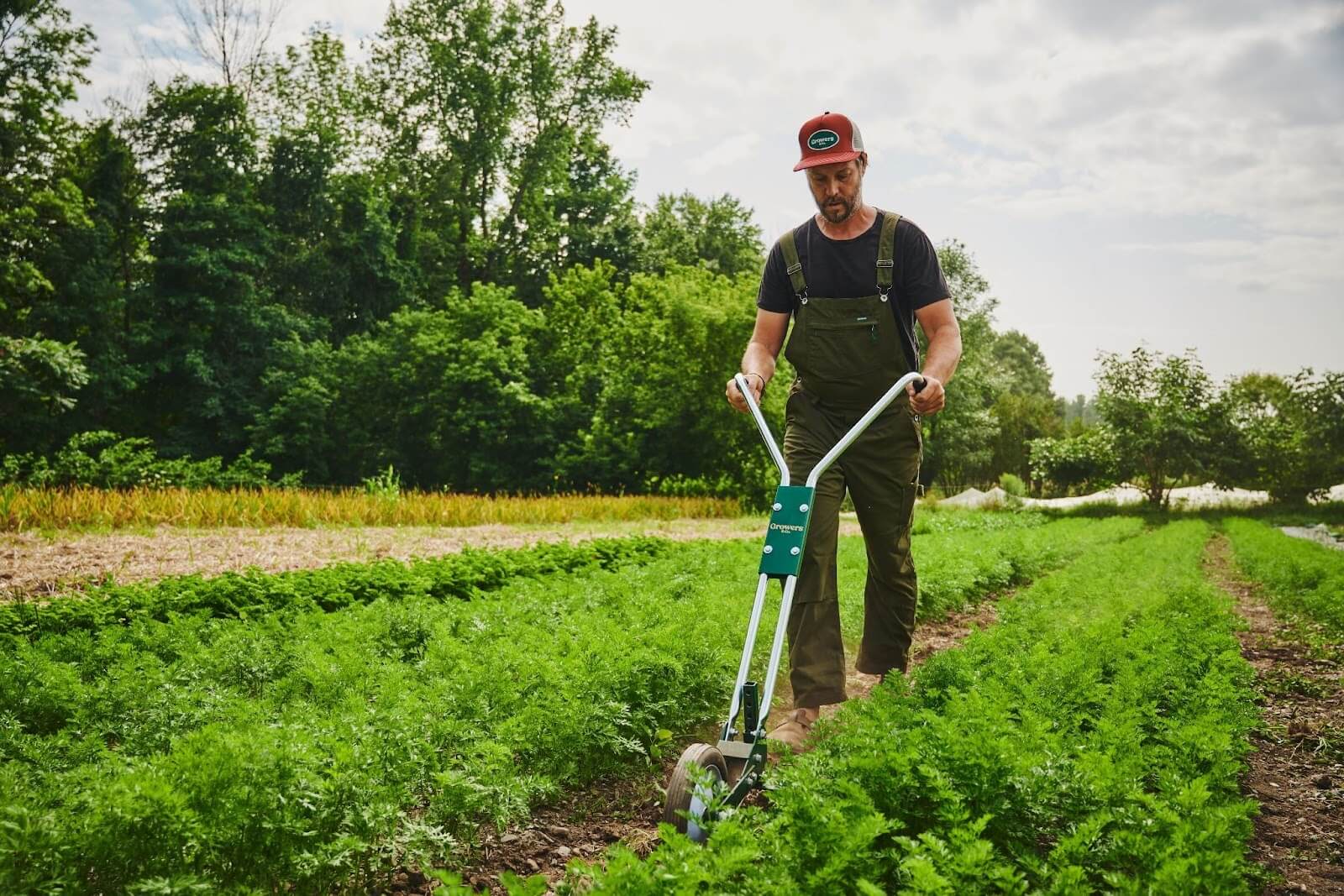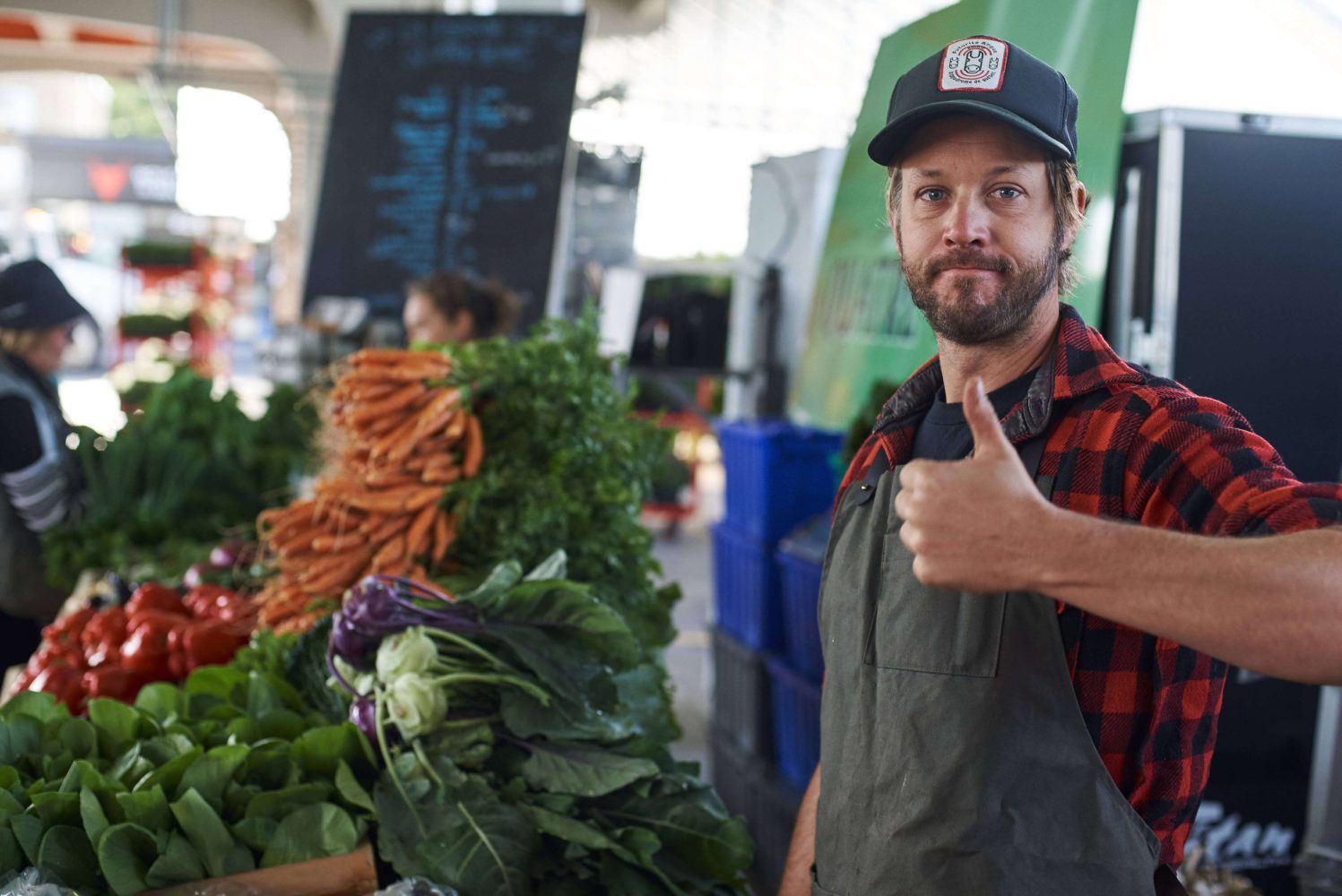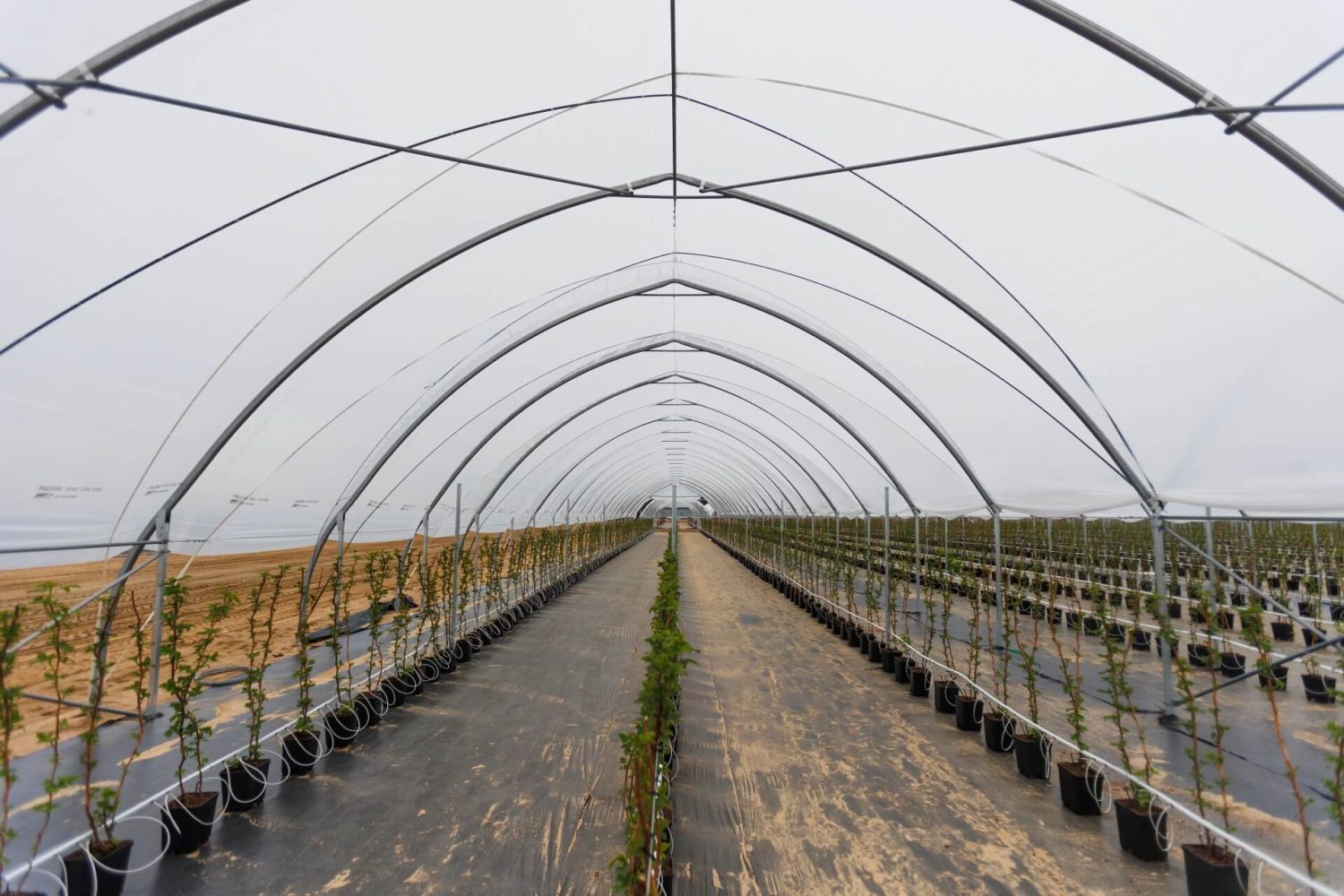Do you have a basic understanding of organic agriculture, but no clue about cultivating in permanent raised beds? Recommended by Jean-Martin Fortier in The Market Gardener, this method of working the soil is used in organic gardening to achieve the highest yields. Keep reading to learn more about this practice in more depth.
What Is a Permanent Raised Bed?
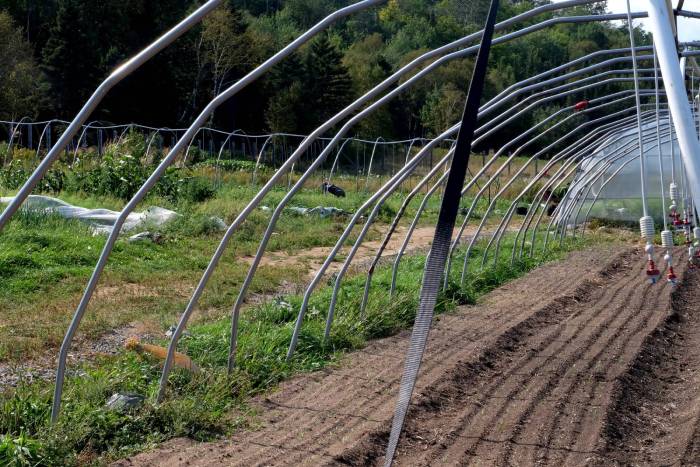
According to Jean-Martin Fortier’s method, crops should be planted in permanent raised beds. Permanent beds are raised mounds of earth about 10-15 centimetres (or roughly 4-6 inches) from the ground, separated by alleys to allow for easy circulation.
If you’ve read our introductory article on biointensive farming, you’ll know that the area under cultivation on a biointensive farm is divided into blocks. Each block is composed of around 10 permanent raised beds. Following Jean-Martin’s method, each crop bed should be 75 centimeters (roughly 30 inches) wide.
As for the length of the beds, it’s up to the gardener to decide what works best for their farm situation. We recommend building beds between 15 metres (roughly 50 feet) and 30 metres (roughly 100 feet) long. The idea is that the beds should always have the same dimensions (75 centimetres or 30 inches wide, and the length of your choice) to allow for uniformity of equipment such as tarps, row covers, irrigation lines, insect netting, etc. This optimizes the equipment and ultimately means you need less of it.
The space between beds is a footpath 45 centimetres (roughly 18 inches) wide. This layout allows the gardener to easily step over a bed without trampling on it, thereby minimizing soil compaction. These aisles should also be wide enough for a wheelbarrow to easily pass through.
The permanent raised beds are the space- and labour-efficient foundation of Jean-Martin’s biointensive cropping system. As such, the bed becomes the unit of measurement for the market garden (rather than the hectare or acre) for calculating everything, for example, soil amendments, crop planning, etc. The beds are grouped in blocks, each with the same number of beds. At Ferme des Quatre-Temps, each block or garden is composed of 10 beds.
How to Build Permanent Raised Beds
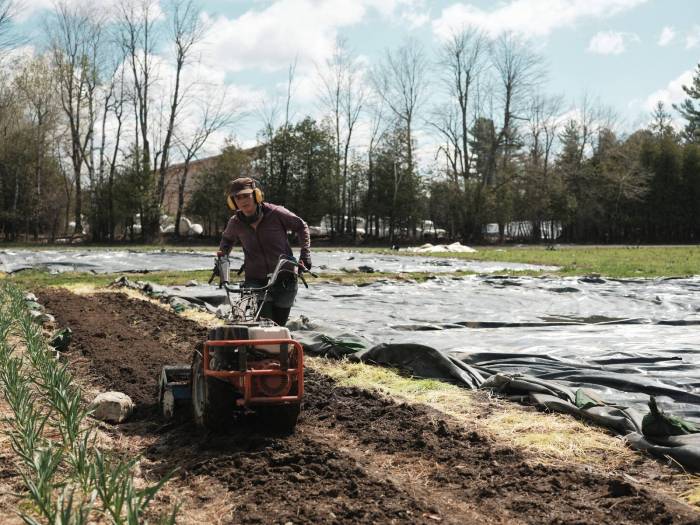
Permanent raised beds are easy to build if your soil is ready. To make raised mounds, you can use a good old shovel. If you have a lot of ground to cover, you can use a walk-behind tractor with a rotary plow. This tool, like the shovel, uses the soil taken from the footpath to raise the cultivation area.
The advantage of this standardized system is, above all, practical. Since the layout is permanent, the use of a tractor to prepare the soil by plowing or tilling before each planting becomes unnecessary. This system allows for non-mechanized farming.
Let’s Review Four Good Reasons to Adopt Permanent Raised Beds:
- Better soil drainage
Permanent raised beds allow water to drain more rapidly away from the surface under cultivation. In temperate climates, where there may be significant precipitation, this is a considerable advantage. Faster drying and warming of the beds will come in handy for starting your growing season as early as possible.
- Less compact, and thus more rich and living soil
Using raised beds reduces soil compaction. The pathways are designed so farmers need not walk on the cultivated surfaces, so they’re not compacted by feet, let alone heavy machinery. Non-compacted soil is more aerated and drained, and therefore much more welcoming to beneficial microorganisms. The loose soil structure also allows vegetable roots to extend deeper into the soil.
- Greater control over your soil
As their name suggests, permanent raised beds are permanent, rather than tilled mechanically every year as in conventional agriculture. This means that the small cultivated area is always exactly the same and market gardeners can focus their efforts on improving soil quality over the course of the seasons. A non-compacted soil, carefully enriched with compost and green manure according to the needs of the successively planted crops, will lead to improved soil structure, as it naturally diversifies with the help of crop rotation.
- Ditch the tractor
If you follow Jean-Martin Fortier’s method, you won’t need a tractor for your land. The handtools used in small-scale organic farming (broadfork, bed preparation rake, seeder, etc.) are inexpensive and adapted for use on permanent, raised beds. This method for permanent raised beds was conceived to use them to their full potential.
Need more information?
If you’re dreaming of starting a biointensive small-scale farm, we’ve put together an Introduction to market gardening course specifically designed to give you the basics of how to do it. If you are ready to start your own market garden and are looking for more advanced information, join the Market Gardener Masterclass. The Masterclass is an online course that teaches the most effective and proven techniques to successfully operate a diversified small-scale farm. They will guarantee you consistent results, as well as help you make the most of your valuable time and keep your body in shape for years to come.
